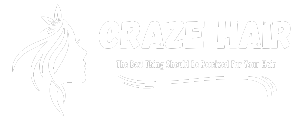
Introduce
Static hair can be a frustrating nuisance, especially when it seems to have a mind of its own. Whether it’s caused by dry air, friction, or other factors, dealing with static can leave you feeling helpless. But fear not! In this article, we’ll explore eight quick fixes to help you banish static and regain control of your hair. From everyday items to specialized products and simple lifestyle adjustments, these solutions will have you saying goodbye to static and hello to smoother, more manageable locks in no time. So let’s dive in and discover how to zap that static away!
Understanding Static Hair
Static hair occurs when there is an imbalance of positive and negative charges on the hair strands, leading to them repelling each other. This phenomenon is particularly common during the colder, drier months when the air lacks moisture. When the air is dry, hair strands lose moisture and become more negatively charged, causing them to repel each other and stand on end.
Factors contributing to static hair include:
- Dry Air: Low humidity levels can strip moisture from the hair, leaving it more prone to static.
- Friction: Rubbing of hair against fabrics or other surfaces can generate static electricity.
- Hair Type: Certain hair types, such as fine or damaged hair, are more susceptible to static due to their porous nature.
- Chemical Treatments: Overly processed hair can become more prone to static due to damage to the hair cuticle.
Quick Fixes with Everyday Items
When static strikes, you don’t always need to rush to the store for specialized products. Many everyday items found in your home can help tame static hair quickly and effectively. Here are some easy fixes to try:
- Water: One of the simplest remedies for static hair is water. Lightly misting your hair with water can help add moisture and reduce static. You can use a spray bottle or dampen your hands and run them through your hair.
- Hairbrush with Natural Bristles: Opt for a hairbrush with natural bristles, such as boar bristles. These brushes help distribute natural oils from the scalp throughout the hair, reducing static and adding shine.
- Dryer Sheets: Rubbing a dryer sheet over your hair can help neutralize static electricity. The anti-static properties of dryer sheets can help smooth down flyaways and keep hair static-free throughout the day.
- Hand Lotion or Moisturizer: Apply a small amount of hand lotion or moisturizer to your hands and then run them lightly over your hair. The moisturizing properties of the lotion can help combat static and add a touch of softness to your locks.
- Metal Comb or Brush: Using a metal comb or brush can help discharge static electricity from the hair. Simply run the comb or brush through your hair to help neutralize the charge and smooth down any flyaways.
- Humidifier: If static hair is a persistent problem, consider using a humidifier in your home, especially during the dry winter months. A humidifier adds moisture to the air, which can help prevent static buildup in your hair.
- Fabric Softener Spray: Mix equal parts of water and fabric softener in a spray bottle and lightly mist your hair with the solution. The anti-static properties of fabric softener can help reduce static and leave your hair smelling fresh.
- Natural Oils: Apply a small amount of natural oils, such as coconut oil or argan oil, to the ends of your hair to help smooth down static and add moisture. Be cautious not to apply too much oil, as it can weigh down fine hair.
Hair Care Products for Static Control
While everyday items can provide quick fixes for static hair, using specialized hair care products can offer longer-lasting solutions. Here are some products specifically formulated to combat static:
- Anti-Static Shampoo and Conditioner: Look for shampoos and conditioners that are labeled as anti-static or moisturizing. These products contain ingredients that help hydrate the hair and reduce static buildup, leaving your locks smoother and more manageable.
- Leave-In Conditioner: Applying a leave-in conditioner to damp hair can help add moisture and prevent static throughout the day. Look for lightweight formulas that won’t weigh down your hair, especially if you have fine or thin hair.
- Hair Serums and Oils: Hair serums and oils are designed to add shine and smoothness to the hair while also taming frizz and static. Apply a small amount of serum or oil to the palms of your hands and run them through your hair, focusing on the ends where static is most common.
- Static Control Sprays: There are specific sprays available that are formulated to combat static and keep hair smooth and static-free. These sprays typically contain ingredients that neutralize static electricity and provide a protective barrier against environmental factors.
- Hairspray: Lightly misting your hair with hairspray can help lock in moisture and keep static at bay. Choose a flexible-hold hairspray that won’t leave your hair feeling stiff or crunchy.
- Ionic Hair Dryers and Styling Tools: Investing in an ionic hair dryer or styling tool can help reduce static by emitting negative ions that neutralize positive charges in the hair. These tools can help minimize static while drying and styling your hair.
- Static Control Sheets: Some hair care brands offer static control sheets that are designed to be gently rubbed over the hair to eliminate static and add shine. These sheets are convenient for on-the-go touch-ups and can be used anytime, anywhere.
- Deep Conditioning Treatments: Treat your hair to a weekly deep conditioning treatment to replenish moisture and repair damage. Look for treatments that contain nourishing ingredients like keratin, collagen, or shea butter to help smooth down static-prone hair.
Hydration: Key to Fighting Static
Hydration plays a crucial role in combating static hair. When the air is dry, hair strands lose moisture, becoming more prone to static electricity. Therefore, maintaining proper hydration levels is essential for keeping static at bay. Here are some hydration-focused strategies to help fight static:
- Drink Plenty of Water: Hydrating your body from the inside out is the first step in combating static hair. Make sure to drink plenty of water throughout the day to keep your body and hair hydrated. Aim for at least eight glasses of water per day, or more if you’re particularly active or in dry environments.
- Use a Hydrating Shampoo and Conditioner: Opt for shampoos and conditioners that are specifically formulated to hydrate and moisturize the hair. Look for ingredients like glycerin, hyaluronic acid, and panthenol, which help attract and retain moisture in the hair shaft.
- Deep Conditioning Treatments: Treat your hair to regular deep conditioning treatments to replenish moisture and repair damage. Choose treatments that are rich in hydrating ingredients, such as coconut oil, shea butter, and argan oil. Apply the treatment to clean, damp hair, focusing on the mid-lengths and ends, and leave it on for the recommended time before rinsing thoroughly.
- Use a Humidifier: Adding moisture to the air with a humidifier can help prevent static buildup in your hair. Place a humidifier in your bedroom or other frequently used spaces to maintain optimal humidity levels, especially during the dry winter months or in air-conditioned environments.
- Avoid Over-Washing: Washing your hair too frequently can strip away natural oils, leaving it dry and prone to static. Try to limit shampooing to every other day or every few days, depending on your hair type and lifestyle. In between washes, use dry shampoo to refresh your hair and absorb excess oil.
- Protect Your Hair from Heat Styling: Excessive heat styling can damage the hair cuticle and contribute to dryness and static. Use heat protectant products before blow-drying, straightening, or curling your hair to minimize damage and lock in moisture. Additionally, opt for lower heat settings whenever possible and give your hair regular breaks from heat styling.
- Cover Your Hair in Harsh Environments: Protect your hair from harsh environmental conditions, such as wind, sun, and chlorine, which can strip away moisture and lead to static. Wear a hat or scarf to shield your hair from the elements, and rinse your hair with fresh water after swimming in chlorinated pools or saltwater.

Styling Techniques to Minimize Static
In addition to using products and maintaining hydration, employing the right styling techniques can help minimize static and keep your hair looking sleek and manageable. fixes to get rid of static hair. Here are some styling tips to consider :
- Use a Wide-Tooth Comb: When detangling your hair, opt for a wide-tooth comb instead of a brush. Brushes can create friction, leading to static buildup, whereas wide-tooth combs gently glide through the hair, minimizing friction and reducing static.
- Avoid Overbrushing: Brushing your hair too frequently can exacerbate static by distributing natural oils unevenly and causing friction. Instead, limit brushing to when necessary, such as when styling or detangling, and use gentle strokes to minimize friction.
- Apply Styling Products Sparingly: Avoid overloading your hair with styling products, as excess product buildup can weigh down the hair and contribute to static. Apply styling products, such as mousses, gels, or creams, sparingly and focus on the mid-lengths and ends to avoid weighing down the roots.
- Opt for Anti-Static Hairstyles: Certain hairstyles can help minimize static by keeping the hair contained and less prone to friction. Sleek updos, braids, and low ponytails are excellent options for minimizing static, as they keep the hair smooth and secure.
- Use a Microfiber Towel or T-shirt to Dry Hair: Instead of rubbing your hair with a traditional towel, which can create friction and contribute to static, opt for a microfiber towel or a soft cotton T-shirt to blot excess water from your hair. These materials are gentler on the hair cuticle and help reduce static buildup.
- Switch to Silk or Satin Pillowcases: Sleeping on silk or satin pillowcases can help minimize friction and reduce static while you sleep. These smooth fabrics create less friction against your hair compared to cotton pillowcases, helping to keep your locks smooth and static-free.
- Avoid Synthetic Fabrics: Clothing made from synthetic fabrics, such as polyester or nylon, can generate static electricity and transfer it to your hair. To minimize static, opt for clothing made from natural fibers like cotton, wool, or silk, which are less likely to create friction and static buildup.
- Use a Humidifying Hair Spray: Spritzing your hair with a humidifying hair spray can help add moisture and reduce static throughout the day. Look for hair sprays specifically formulated to combat static and provide a lightweight, flexible hold without weighing down the hair.

Conclusion
In conclusion, banishing static hair is achievable with the right approach and a few simple adjustments to your hair care routine. By understanding the factors that contribute to static, utilizing everyday items and specialized products, prioritizing hydration, and implementing effective styling techniques, you can keep static at bay and enjoy smoother, more manageable locks. Whether it’s misting your hair with water, investing in anti-static hair care products, or opting for silk pillowcases, there are plenty of strategies to explore. With a little experimentation and persistence, you can say goodbye to static and hello to frizz-free hair days ahead. So embrace these quick fixes and long-term solutions, and let your hair shine with confidence! read more
FAQs:
1. What causes static hair?
Static hair is often caused by a buildup of static electricity, which occurs when there is an imbalance of positive and negative charges on the hair strands. Factors such as dry air, friction from brushing or clothing, and certain hair types can contribute to static buildup.
2. How can I prevent static hair?
Preventing static hair involves addressing the root causes, such as maintaining proper hydration, minimizing friction, and using anti-static products. This can include using a humidifier, opting for natural fiber clothing, and incorporating hydrating hair care products into your routine.
3. Are there any quick fixes for static hair?
Yes, there are several quick fixes for static hair, including misting your hair with water, using a dryer sheet, applying hand lotion or moisturizer, and using a metal comb or brush to discharge static electricity.
4. What hair care products are best for controlling static?
Hair care products that are specifically formulated to combat static, such as anti-static shampoos and conditioners, leave-in conditioners, hair serums and oils, and static control sprays, can be effective in minimizing static and keeping hair smooth and manageable.
5. Are there any lifestyle adjustments I can make to reduce static hair?
Yes, making certain lifestyle adjustments can help reduce static hair. This can include wearing silk or satin pillowcases, avoiding over-washing your hair, using a wide-tooth comb instead of a brush, and opting for hairstyles that minimize friction, such as sleek updos or braids.
6. Can static hair be a sign of underlying hair health issues?
While static hair is often a temporary and common occurrence, persistent static may be a sign of underlying hair health issues, such as dryness, damage, or excessive chemical treatments. If you are experiencing frequent static hair despite trying various remedies, it may be worth consulting a hair care professional for personalized advice.

